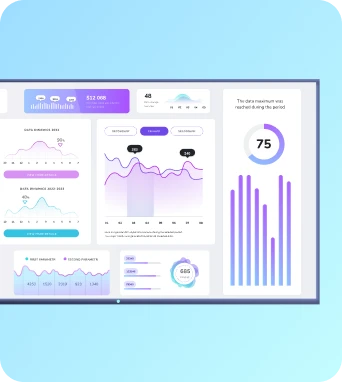Audio zones
Audio zones are configurable areas within a digital signage network that control which displays and speakers output sound, allowing independent volume, content routing and scheduling per space. They help manage overlapping sound, comply with local policies, and deliver targeted audio experiences across multiple rooms, floors or outdoor areas.
Audio zones
Designing audio zones
Begin design by mapping the physical layout and use-case of each area. Identify discrete spaces where audio must be independent: meeting rooms, customer service counters, seating areas and external zones. Consider factors such as ceiling height, reflective surfaces and expected occupancy, as these affect perceived loudness and intelligibility. Decide whether zones will map to a single display with attached speakers, to clusters of displays sharing a common speaker system, or to line arrays and amplifiers serving larger areas. Where multiple displays are visible from the same vantage points, design zones to minimise overlap to prevent competing audio sources. Name zones clearly and consistently in your management console so operators can quickly assign content and volume policies. Plan for hardware compatibility early. HDMI output, USB audio, Bluetooth-connected speakers, networked audio-over-IP and integrated player speakers each carry different constraints around latency, quality and control. Choose devices that support the audio routing you require and make sure the Fugo Player or supported media player firmware can expose the necessary controls. For larger installations, use central audio amplifiers with zone outputs or networked audio processors to simplify cabling and control. Establish baseline volume targets using a sound level meter to standardise perceived loudness across zones, and define guardrails such as maximum decibel thresholds and quiet hours to comply with regulations or workplace policies. Integrate audio strategy with content scheduling. Decide which playlists should include audio, which should rely on subtitles or visual communication, and when zones should be muted for meetings or overnight. Use staggered scheduling where adjacent zones play at complementary times to avoid clashes. Test the whole system under realistic occupancy and noise conditions and iterate on speaker placement and EQ settings. Document the design and operational procedures so technicians can recreate or expand zones reliably across multiple sites.
Implementing and troubleshooting audio zones
Implementing audio zones in a Fugo context begins with grouping devices logically in the dashboard and associating those groups with zone profiles that contain volume, mute schedule and content permissions. Push configurations centrally and confirm each player reports its zone assignment and audio status. For players using HDMI or local audio outputs, verify cable runs and audio switcher settings. For network audio, check multicast or unicast routing and ensure the LAN supports the additional traffic without introducing jitter. Keep firmware and player software up to date to benefit from stability and new audio control features. Where precise lip-sync is essential, prefer local playback of combined audio-video assets or ensure network latency is consistent and accounted for by buffering settings. Common issues include missing audio, unsynchronised playback between displays within a zone, and unexpected audio across adjacent zones. Missing audio is often caused by incorrect source routing, muted outputs at the player or OS level, codec incompatibility, or user permissions in the signage platform. Start troubleshooting by confirming base media playback on a single device, then expand scope to group behaviour. Synchronisation problems can result from variable network latency or mismatched buffering; employ identical player models and settings, use wired connections where possible, and use Fugo’s monitoring tools to check playback timestamps and health metrics. For audio bleed, adjust speaker directionality, lower gain and refine zone boundaries to prevent overlap. Maintain an operational checklist for routine validation: check device logs for audio errors, confirm volume profiles are enforced during scheduled events, and run periodic listening tests. Train on-site staff to perform basic fixes like power-cycling players, checking local volume controls and ensuring no external Bluetooth device has paired inadvertently. For complex issues, capture logs, note the exact time and content involved, and escalate to Fugo support with device IDs and network information so remote diagnostics can proceed quickly. Regular reviews and updates to zone configurations will keep the audio experience aligned with evolving site use and compliance needs.
Best practices
Keep the learning going...
Audio over IP
Audio over IP (AoIP) is the transmission of multichannel digital audio across standard IP/Ethernet networks using packetized protocols and industry standards.
Audit trail
A chronological, tamper-evident record of actions and events that shows who performed what, when, and where, used for accountability, compliance, and investigation.
Augmented Reality (AR) integration
Augmented Reality (AR) integration refers to embedding virtual content into physical environments and camera feeds and connecting those overlays to a digital signage system. In a Fugo.ai context it enables contextual graphics, data visualisations and interactive wayfinding to appear on TV dashboards, mobile devices and location-based screens for richer, real-time communications.



